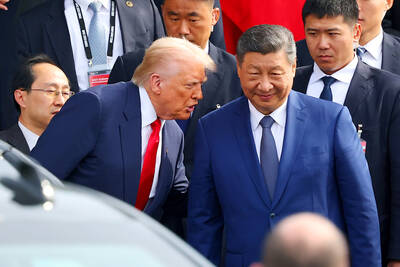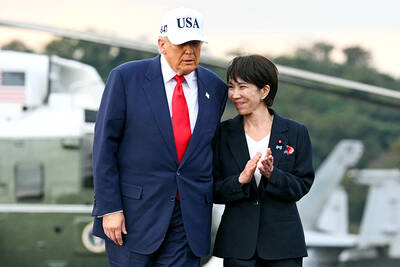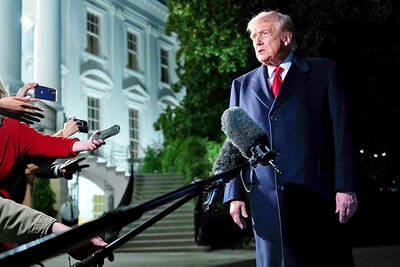Scientists are boldly going where only fiction has gone before -- to develop a "Cloak of Invisibility."
It is not quite ready to hide a Romulan space ship from Captain James T. Kirk of Star Trek or to disguise Harry Potter. But it is a significant start and could show the way to more sophisticated designs.
In this first successful experiment, researchers from the US and Britain were able to cloak a copper cylinder.
It is like a mirage, where heat causes the bending of light rays and cloaks the road ahead behind an image of the sky.
"We have built an artificial mirage that can hide something from would-be observers in any direction," said cloak designer David Schurig, a research associate in Duke University's electrical and computer engineering department.
For their first attempt, the researchers designed a cloak that prevents microwaves from detecting objects. Like light and radar waves, microwaves usually bounce off objects, making them visible to instruments and creating a shadow that can be detected.
The cloaking uses special materials to deflect radar or light or other waves around an object like water flowing around a smooth rock in a stream. It differs from stealth technology, which does not make an aircraft invisible but reduces the cross-section available to radar, making it hard to track.
The new work points the way for an improved version that could hide people and objects from visible light.
Conceptually, the chance of adapting the concept to visible light is good, Schurig said in a telephone interview. But, he added, "From an engineering point of view it is very challenging."
The cloaking of a cylinder from microwaves comes just five months after Schurig and colleagues published their theory that it should be possible. Their work was reported in a paper in yesterday's issue of the journal Science.
"We did this work very quickly ... and that led to a cloak that is not optimal," said co-author David Smith, also of Duke.
"We know how to make a much better one," he added.
The first working cloak was in only two dimensions and did cast a small shadow, Smith said.
The next step is to go for three dimensions and to eliminate any shadow.
Viewers can see things because objects scatter the light that strikes them, reflecting some of it back to the eye.
"The cloak reduces both an object's reflection and its shadow, either of which would enable its detection," Smith said.
The cloak is made of metamaterials, which are mixtures of metal and circuit board materials such as ceramic, Teflon or fiber composite.
In an ideal situation, the cloak and the item it is hiding would be invisible. An observer would see whatever is beyond them, with no evidence that the cloaked item exists.

UKRAINE, NVIDIA: The US leader said the subject of Russia’s war had come up ‘very strongly,’ while Jenson Huang was hoping that the conversation was good Chinese President Xi Jinping (習近平) and US President Donald Trump had differing takes following their meeting in Busan, South Korea, yesterday. Xi said that the two sides should complete follow-up work as soon as possible to deliver tangible results that would provide “peace of mind” to China, the US and the rest of the world, while Trump hailed the “great success” of the talks. The two discussed trade, including a deal to reduce tariffs slapped on China for its role in the fentanyl trade, as well as cooperation in ending the war in Ukraine, among other issues, but they did not mention

Japanese Prime Minister Sanae Takaichi yesterday lavished US President Donald Trump with praise and vows of a “golden age” of ties on his visit to Tokyo, before inking a deal with Washington aimed at securing critical minerals. Takaichi — Japan’s first female prime minister — pulled out all the stops for Trump in her opening test on the international stage and even announced that she would nominate him for a Nobel Peace Prize, the White House said. Trump has become increasingly focused on the Nobel since his return to power in January and claims to have ended several conflicts around the world,

REASSURANCE: The US said Taiwan’s interests would not be harmed during the talk and that it remains steadfast in its support for the nation, the foreign minister said US President Donald Trump on Friday said he would bring up Taiwan with Chinese President Xi Jinping (習近平) during a meeting on the sidelines of the APEC Summit in South Korea this week. “I will be talking about Taiwan [with Xi],” Trump told reporters before he departed for his trip to Asia, adding that he had “a lot of respect for Taiwan.” “We have a lot to talk about with President Xi, and he has a lot to talk about with us. I think we’ll have a good meeting,” Trump said. Taiwan has long been a contentious issue between the US and China.

Taiwan’s first African swine fever (ASF) case has been confirmed and would soon be reported to the World Organization for Animal Health (WOAH), Minister of Agriculture Chen Junne-jih (陳駿季) yesterday. The Ministry of Agriculture’s Veterinary Research Institute yesterday completed the analysis of samples collected on Tuesday from dead pigs at a hog farm in Taichung and found they were ASF-positive. Animal and Plant Health Inspection Agency Animal Quarantine Division chief Lin Nien-nung (林念農) said the result would be reported to the WOAH and Taiwan’s major trade partners would also be notified, adding that pork exports would be suspended. As of Friday, all samples